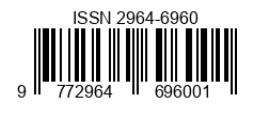The Effect of Adding Teak Charcoal as a Filler on the Performance of the Asphalt Concrete-Wearing Course (AC-WC)
DOI:
https://doi.org/10.56444/jcets.v3i2.1757Keywords:
Filler, Teak Wood Charcoal, MarshallAbstract
The filler in asphalt concrete layers usually uses Portland cement, whose raw materials are limestone and clay, these resources are limited and cannot be renewed. Therefore, teak wood charcoal can be an alternative filler. Charcoal contains non-polar carbon compounds, such as asphalt, which have adhesive properties to hold different particles together. So, in this research, it is hoped that teak wood charcoal can be used as a filler in accordance with the General Specifications of Bina Marga 2018 Revision 2. This research uses variations in filler levels of 0%, 1%, 2%, 3% and 4%. Based on the Marshall test results, the optimum asphalt content value was 6.40% and the optimum filler content value was 0.58%. The addition of teak charcoal as a filler increases the stability, Marshall Quotient, VIM and VMA values, but reduces the flow and VFA values. In conclusion, the addition of teak charcoal as a filler to the AC-WC mixture can increase the strength of the road pavement, but excessive use can make the road pavement porous and damaged.
Downloads
Published
Issue
Section
License
Copyright (c) 2024 Journal of Civil Engineering and Technology Sciences

This work is licensed under a Creative Commons Attribution-ShareAlike 4.0 International License.












